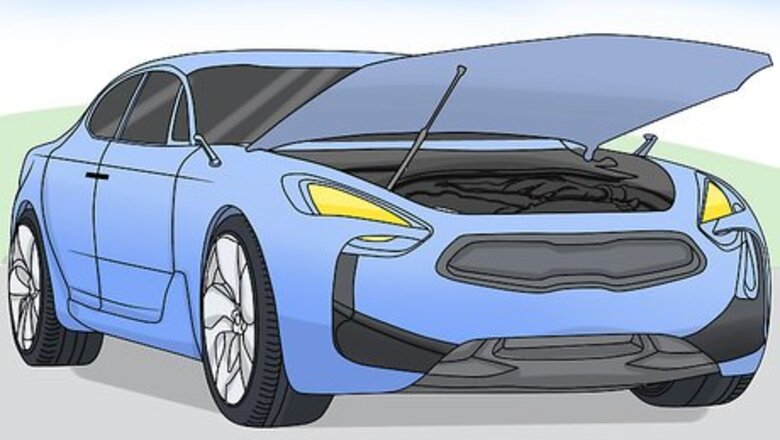
views
Locating the Starter Solenoid
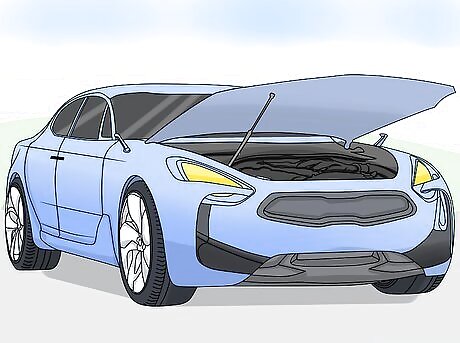
Open the hood of the vehicle. The starter and solenoid are located on the engine of your vehicle. In order to gain access to it, pull on the hood release located near the door on the driver’s side of the vehicle. You will need to release the safety latch on the front of the vehicle in order to open the hood as well. If you are unable to locate the safety release, refer to your vehicle’s owner’s manual for directions.

Find the starter. The starter is usually located near where the engine and transmission meet. The starter itself is usually cylindrical in shape with a smaller cylinder attached to it. There should be a wire coming directly from the positive terminal of the battery to the starter. While starters come in many sizes, they are usually shaped the same. Refer to your vehicle’s service manual if you are unable to locate the starter.
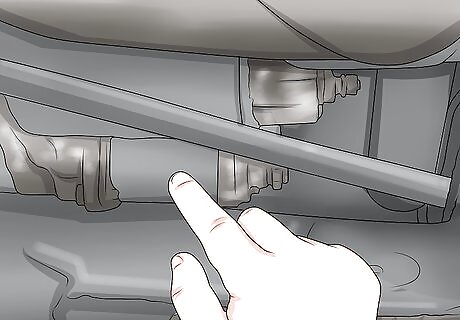
Identify the cylinder on the side of the starter. The smaller cylinder attached to the top or side of the starter is the starter solenoid. It is a fairly simple electrical mechanism that can fail, preventing the starter from engaging and starting the motor. The starter solenoid will have two terminals coming out of its end. The wire from the battery will connect to one of those two terminals.
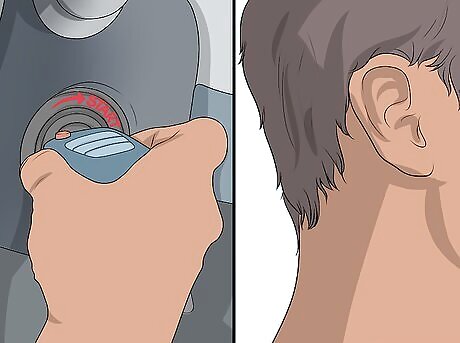
Listen for the solenoid to click when the key is turned. Have a friend turn the key in the ignition to attempt to start the vehicle. Listen carefully, as you should hear a click when the starter solenoid engages. If you do not hear a click, the starter solenoid is likely not functioning properly. If you do hear clicking, the solenoid may be engaging, but not sufficiently. Hearing clicking without the starter motor moving means the solenoid is transferring the electricity, but it may not be enough. No clicking means the solenoid is not properly engaging, but this may also be due to a dead battery. EXPERT TIP Jason Shackelford Jason Shackelford Auto Technician Jason Shackelford is the Owner of Stingray Auto Repair, a family owned and operated auto repair shop with locations in Seattle and Redmond, Washington. He has over 24 years of experience in auto repair and services, and every single technician on Jason’s team has more than 10 years of experience. Jason Shackelford Jason Shackelford Auto Technician Our Expert Agrees: If your starter solenoid is bad, you may hear a clicking sound when you turn the key, or your vehicle may not have any power at all.
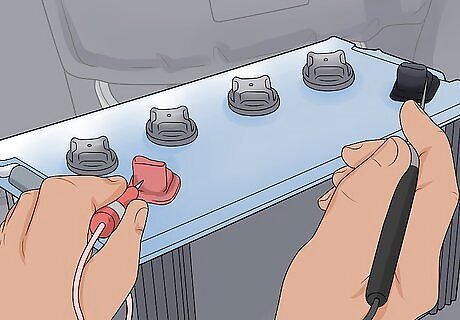
Check the battery. If your starter is failing to engage, it may be because the battery does not have sufficient energy to power it. Rule this out by testing the battery with a volt meter. Low power could result in the starter clicking but failing to engage. Place the positive (red) lead on the voltmeter on the positive terminal of the battery and negative (black) lead on the negative terminal. Your battery should measure at around 12 volts at a rest before you attempt to start the vehicle. If the voltage is low, the battery may just need to be charged.
Checking for Current from the Solenoid
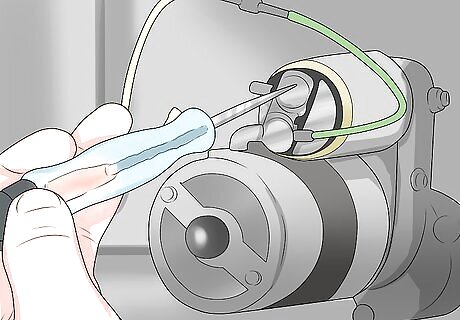
Connect a test light to the output terminal of the solenoid. There are two small terminals sticking out of the face of a starter solenoid. One is the 12 volt positive (top) that comes from the battery. When the starter solenoid is activated, it connects the lower terminal to the upper one internally, engaging the starter motor. There should be continuous power going to the top solenoid terminal. Press the red lead from the test light onto the top terminal and hold it in place.

Ground the black lead from the test light. The black lead from the test light must be connected to a grounded surface in order to complete the circuit and test the power passing through it. Any part of the body of the vehicle will suffice as a ground, provided it is bare metal. You can touch the black lead to any bare metal on the body of the vehicle. You may also touch it to the negative terminal on the battery.
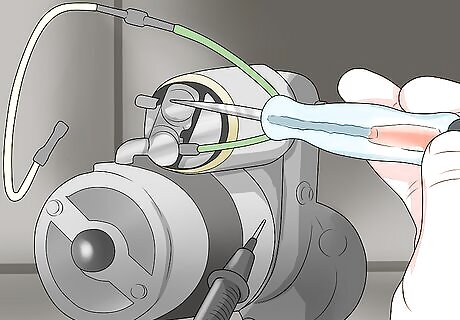
Observe the light. If the light comes on when you have the test light touching the top terminal on the starter solenoid and the other lead grounded, it means there is electricity coming from the battery to the starter solenoid itself. This means there could be an issue with the solenoid, rather than simply a dead battery. Once you have confirmed that there is power going to the solenoid, you can test if the solenoid is transferring it properly.

Switch the red lead to the lower terminal on the solenoid. Now that you have confirmed that there is power going into the solenoid, the next step is to determine whether or not the solenoid is transferring the power properly. Place the red lead on the lower terminal that should only have power when the vehicle is starting. Hold the lead in place on the lower terminal. Keep the black lead grounded.
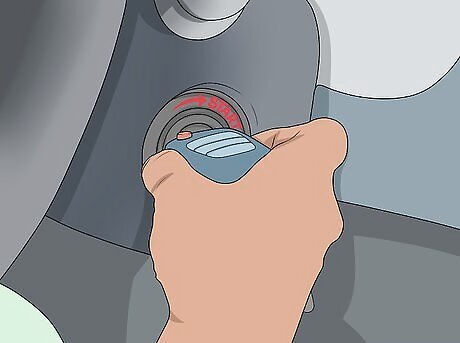
Have a friend turn the ignition. While you hold the two leads in place, ask a friend to turn the ignition. This should make the solenoid bridge the connections internally and send electricity to the lower terminal on the solenoid. Be careful not to get your hands or clothes in the way of any engine components that may move if the vehicle starts. Do not allow the test light wiring to hang into the area around the belts.
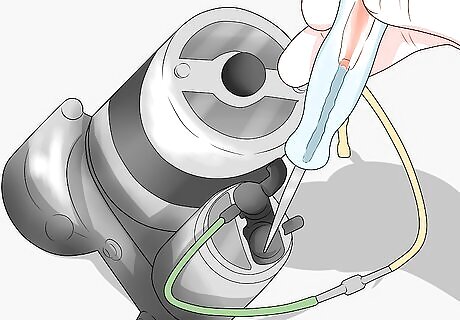
Look for the light to come on. If the test light comes on, it means the solenoid is transferring power from the battery to the starter. If the starter fails to activate despite the light coming on, the starter itself may need to be replaced. If the light does not come on, it means the solenoid is failing to transfer the power and will need to be replaced. You can often purchase a starter and starter solenoid together, as it may be easier to replace them both at once. Make sure to tell the clerk at your local auto parts store the correct year, make and model of your vehicle to purchase the right replacement parts.
Testing Current Resistance
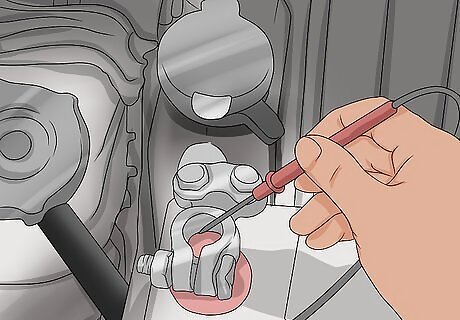
Connect the voltmeter to the positive terminal on the battery. A voltmeter will show you how much voltage is currently passing through the circuit the meter is a part of. Start by attaching the positive lead (red) from the voltmeter to the positive terminal on the battery. The positive terminal will be labeled with the letters “POS” or the positive (+) symbol. Some volt meters may clip into place, while others may require you to hold to lead onto the battery.

Connect the negative lead to the ground terminal. This test is to determine how much voltage the starter solenoid is drawing from the battery when it is attempting to start. Place the negative lead (black) from the voltmeter on the negative terminal on the battery to complete the circuit. With the positive and negative leads connected to the battery, the voltmeter should turn on.

Observe the reading on the voltmeter. Your car battery should produce approximately 12 volts when nothing is drawing off of it. Read the display on the volt meter to ensure your battery is producing an adequate level of power. If the voltmeter reads less than 12 volts, the vehicle may not be starting due to insufficient charge on the battery. The number may jump around as you move the leads a bit and the meter tries to read the voltage. Wait for it to settle to determine the baseline voltage.
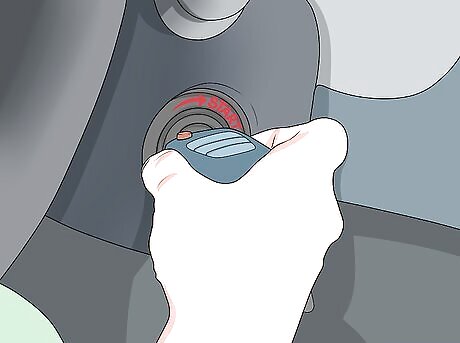
Have a friend turn the ignition. While holding the leads on the positive and negative terminals on the battery, have a friend turn the key in the ignition to attempt to start the vehicle. Be careful to stay clear of anything that may move if the engine actually starts. The voltage reading from the battery should drop approximately half a volt while the starter attempts to start the vehicle. If the voltage does not drop, there is an issue with the connection from the battery to the starter.
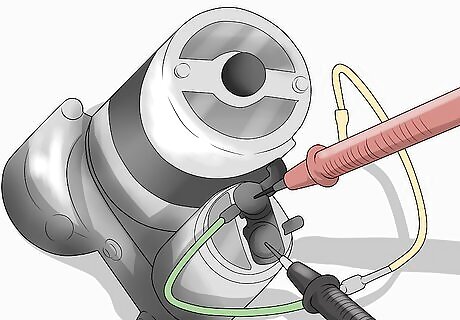
Move the voltmeter to the leads on the starter solenoid. Place the positive lead from the voltmeter on lower terminal from the solenoid (closer to the starter). Then place the negative lead on the upper most terminal coming from the battery. Have your friend turn the key again. Ensure the leads are firmly touching or attached to the terminals coming from the solenoid for a good reading.
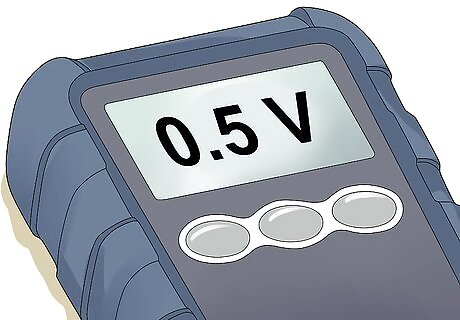
Look for an appropriate voltage drop. The voltage drop you see on the solenoid should match the drop you saw on the battery. The drop in voltage should not exceed a half a volt. If you do not read any voltage at all, the solenoid needs to be replaced. If the voltage drops less than a half a volt, there is an issue inside the solenoid. If the voltage drops too much, there may be a fault somewhere in the connection, such as a crimped line from the battery to the solenoid.

















Comments
0 comment